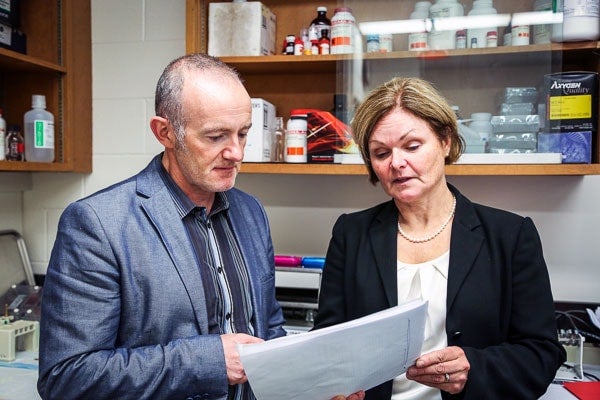
Safer anesthesia and sounder sleep
Published: September 26, 2013
Life before anesthesia was horrific. Operations were incredibly painful. Many patients facing surgery suffered anxiety worse than the condition their surgery was supposed to fix.
That’s probably why a 2007 British Medical Journal poll named anesthetics one of the top three medical advances since the 1840s, along with sanitation and antibiotics.
But how these potent — yet dangerous — agents of bliss actually work is a mystery. Indeed, the science of how we dull sensation hasn’t advanced much since anesthesia was invented.
“Anesthesia drugs today are just expensive cousins of ether,” says Dr. Beverley Orser, a professor in the Departments of Anesthesia and Physiology at the University of Toronto who holds the Canada Research Chair in Anesthesia. “We need to move beyond ‘not killing as many people as we once did,’ to ‘drug discovery.’”
The need for a new era in anesthesia is pressing. Deaths related to anesthesia are down to about one patient per 13,000 in developed countries. But in low-income countries like Togo, without highly trained anesthesiologists and newer, safer technologies, the death rate is about one in 150.
Mounting evidence suggests that anesthetics are responsible for many post-surgery respiratory, memory and cognition problems. Some of these may be long-term or permanent or, in the case of breathing problems, even lethal.
To develop drugs with fewer side effects and safety risks, Orser and other researchers have focused on individual elements of the anesthetized state. Their goal is specificity: loss of consciousness without impaired memory, for example, or immobility that doesn’t shut down breathing.
Orser’s lab has already identified and begun to manipulate a subtype of a neurotransmitter called GABA that plays a key role in memory disruption. More recently, Orser expanded her focus to an area historically outside anesthesia — sleep.
Orser and Richard Horner, a professor in U of T’s Departments of Medicine and Physiology, have begun to study how anesthesia and sleep overlap at the molecular level.
“Anesthetics and painkillers are a black box,” says Horner, who is also the Canada Research Chair in Sleep and Respiratory Neurobiology. “But increasingly, it seems they tap into the same molecular circuits that put our brains to sleep.”
Horner’s lab recently located the spot in the brain that opioids activate, critically depressing breathing in sleep and anesthesia. Now, they are mapping the molecular pathways at work in this important class of painkillers.
Horner’s research has also begun to explore the origins of obstructed breathing during sleep, which can be fatal if left untreated. Sleep apnea, a respiratory problem that affects about four per cent of the population, causes hypertension and doubles the chance of heart attack and stroke. It also leads to daytime drowsiness that lowers productivity at work and raises the risk of car accidents and other injuries.
Horner’s lab has identified a target for one of the first molecular therapies for sleep apnea.
“The idea is to trick the cells that matter to keep the airway open, and this same thinking may keep patients breathing when they are asleep or anesthetized,” says Horner, who with Orser, hopes to soon launch a unique anesthesia and sleep science research program at U of T.
“How does anesthesia work, and what is the function of sleep?” says Orser. “As we probe both questions, answers in one area should provide insights to the other. Major advances come from looking at the sciences differently and bringing them together in novel programs.”
Jim Oldfield is a writer with the Faculty of Medicine at the University of Toronto.



